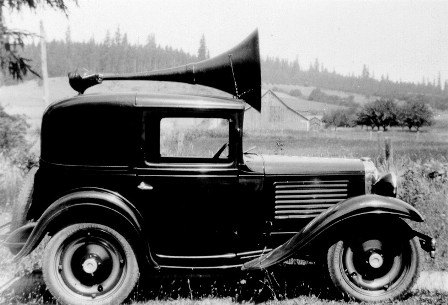Business Week Predicts Higher Auto Prices for 2009. Huh?

Ed Wallace at Business Week offers a counter-intuitive view: 2009 will see record low automobile sales…. and increased prices. My first inclination was to dismiss the man out of hand. But this past April he presciently said “ There is No Gas Shortage” and followed up a few weeks later with a well-argued skewering of the ethanol myth. So, Ed Wallace is no Bob Lutz. But still, his latest proclamation is hard to swallow. “The time of heavy rebates is over as carmakers get ready to raise prices to increase profits. Get ready for sticker shock.” After that opening salvo, Ed goes tells the global tale of automaker woe. He rightfully points out that governments in German, England, France, Canada and China are stepping in to make sure their companies stay in the game, while the US government wrings its hands. But does anyone really think that the new US government is going to sit back and watch the indigenous auto industry implode?
The problem with all of this propping-up biz: it keeps the marketplace oversupplied with both unit volume and nameplates. Wallace justifies his prediction of falling sales and increasing prices by saying “What we witnessed in 1974, 1980-81, and 1992 was a fairly consistent series of price increases to create profits even as sales tanked.” But he neglects to mention that 1974’s Consumer Price Index inflation rate was over 11 percent, 1980 topped 13 percent and 1981 hit just over 10 percent.
Furthermore, the big news of 1981 was “Voluntary Export Restrictions,” under which Japan’s auto exports to the US were capped. 1992 was the only one of Wallace’s noted years with a relatively modest three percent inflation rate.
In short, today’s market is more fragmented and competitive than ever before in history. No company or cabal gets to set the price. Detroit’s managers have never lived inside the reality they must face today.
Today’s Korean and Japanese competitors have made it clear that they aren’t going to cede sales to Detroit on price; they’ll do whatever’s necessary to move the metal. Likewise, Volkswagen is steaming full speed ahead with plans to finally get a seat at the big boys table in the US market.
The China Price effect has already laid waste to much of the business-to-business market for manufactured goods– and just about everything sold in Wal-Mart. Automobiles are the last big frontier for China’s export manufacturing assault. Existing Korean, Japanese, French and German based competition means that no matter how many factories Detroit closes, they are unlikely to have the power to push through price increases during a time of slack demand. Prospective Chinese competition only ups the ante further.
Ed Wallace thinks today’s Cadillac CTS is a screaming bargain at $10k off its inflated sticker price. But what if it were built in Shanghai?

More by John Horner
Latest Car Reviews
Read moreLatest Product Reviews
Read moreRecent Comments
- Wjtinfwb My comment about "missing the mark" was directed at, of the mentioned cars, none created huge demand or excitement once they were introduced. All three had some cool aspects; Thunderbird was pretty good exterior, let down by the Lincoln LS dash and the fairly weak 3.9L V8 at launch. The Prowler was super cool and unique, only the little nerf bumpers spoiled the exterior and of course the V6 was a huge letdown. SSR had the beans, but in my opinion was spoiled by the tonneau cover over the bed. Remove the cover, finish the bed with some teak or walnut and I think it could have been more appealing. All three were targeting a very small market (expensive 2-seaters without a prestige badge) which probably contributed. The PT Cruiser succeeded in this space by being both more practical and cheap. Of the three, I'd still like to have a Thunderbird in my garage in a classic color like the silver/green metallic offered in the later years.
- D Screw Tesla. There are millions of affordable EVs already in use and widely available. Commonly seen in Peachtree City, GA, and The Villages, FL, they are cheap, convenient, and fun. We just need more municipalities to accept them. If they'll allow AVs on the road, why not golf cars?
- ChristianWimmer Best-looking current BMW in my opinion.
- Analoggrotto Looks like a cheap Hyundai.
- Honda1 It really does not matter. The way bidenomics is going nobody will be able to afford shyt.


































Comments
Join the conversation
Uhh, back to cars... For a sustained price increase to work there has to be increased demand and increased capacity to buy. You can influence the former by reducing supply, but if any predictions of the coming cash-only economy are even partly correct, there will be too few bidders. It will be the opposite of "we lose on each one but we'll make it up in volume" - "we make a fortune on each one but we can't sell any." Of course, the supply reductions have lagged the demand reduction these last few months, so it wouldn't be at all surprising if there were a corresponding upside price spike if incomes recover before supply ramps up. That usually happens in short-cycle recessions, though, and many think we are in for a long one this time.